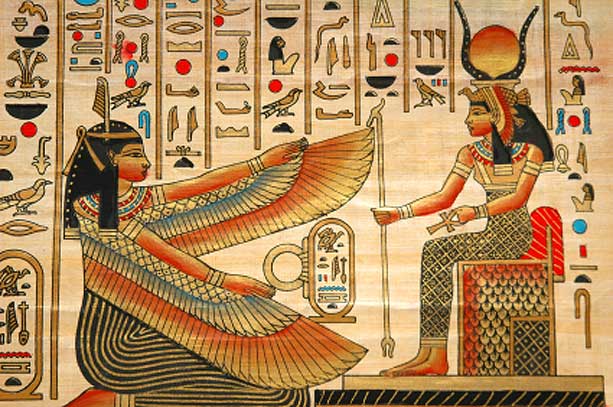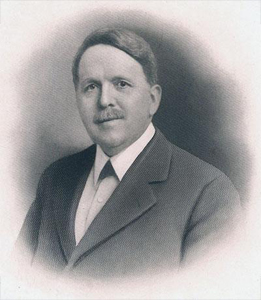The History of Reflexology talks about ancient therapies used for healing our body without medicines. Reflexology was one such form of treatment in India and China, which was practiced over 5000 years ago. A similar therapy was practiced in ancient Egypt too. The great Florentine Sculptor, Cellini (1500-1571 AD) exerted strong pressure on his toes and fingers to relieve pain anywhere in the body with remarkable success.

In central European countries, similar methods were described by Dr. Adamus and Dr. A’Tatis in 1582 AD. At the same time, Dr. Ball of Leipzig (Germany) published a booklet describing the treatment of organs through pressure points. The twentieth American President W. Garfield (1831-1881 AD) was able to alleviate the pains he had after an assassination attempt on his life. Before applying these pressure points in various surfaces of his body, he used various medicines which couldn’t give him any relief.
Another exponent of pressure therapy was Dr. H. Bressler. Dr. Bressler’s work and success generated a lot of interest in Dr. William Fitzgerald (1872-1942 AD). Dr. Fitzgerald graduated in medicine from the University of Vermount in 1895. For two years he was on the staff of Central London Ears, Nose and Throat Hospital. Later, he started practicing as a physician at the Boston City Hospital and as a laryngologist at St. Francis ENT Hospital in Hartford, Connecticut. It was in 1902 AD, while he was the head of ENT Department that he was drawn to pressure therapy. He started working on toes and fingers of his patients to quickly realize that this produced considerable analgesia and relieved headaches, earaches, tummy aches etc.

While other doctors like H. Bressler had employed pressure therapy infrequently on a few patients, Dr. Fitzgerald started to employ it methodically on most of the patients who came to him. He achieved great success in his endeavors. He took great pains to make this therapy, known to doctors. Therefore, Dr. Fitzgerald can be considered the re-discoverer of Reflexology, as he gave it a fresh lease of life.
Dr. Fitzgerald evolved a theory that divided the human body longitudinally into five zones on the left and five zones on the right. He had realized that any problem of an organ lying in one particular zone could be treated by applying pressure somewhere else within the same zone.
Zone Therapy was further popularized by Dr. Edwin Bowers MD, an early associate of Dr. Fitzgerald. He developed a unique and startling method for convincing his colleagues about the validity of zone therapy. He would apply pressure to a colleague’s hand and then stick a pin in the corresponding area (zone) of his face anaesthetized by the pressure. Such dramatic proof made believers out of those who witnessed it. Along with Dr. Fitzgerald, Dr. Bowers brought out the first book on pressure therapy entitled ‘Zone Therapy’. It contained therapeutic recommendations and guidelines for doctors, dentists, gynecologists, ENT specialists and others.
Reflex Zone Therapy was given further impetus by Dr. George White and Dr. Joseph Riley.
Working in Dr. Riley’s office was a therapist, Eunice Ingham. She had seen Dr. Riley working on patients hands. If pressing on hands can influenced internal organs, pressing on soles should also produce similar effects, she thought. Driven with this idea, she began probing the feet of all persons she came across, finding a tender spot and correlating it with the diseased internal organ. Such careful study enabled her to map the entire human body on the soles of the two feet. Dr. Fitzgerald divided each foot into five longitudinal zones; Eunice Ingham further subdivided it (with the help of three lines into four transverse zones).
Though the history of reflexology is never ending, the above information is completely enough to know the importance of reflexology, reflexology pressure points and techniques.
Frequently Asked Questions:
Who invented reflexology
Reflexology, as a holistic practice, was not invented by a single individual. Its roots trace back to ancient healing practices from various cultures worldwide. However, the modern structured form of reflexology, as we know it today, evolved through the contributions of multiple individuals over time. Dr. William H. Fitzgerald and later Eunice Ingham are credited for shaping reflexology into a structured therapeutic practice in the early to mid-20th century.
Where did reflexology originate
Reflexology has roots in ancient civilizations, with evidence suggesting its practice in various forms across different cultures throughout history. However, the modern concept and structured practice of reflexology, particularly in its current form, were developed in the early 20th century. Dr. William H. Fitzgerald and later Eunice Ingham played pivotal roles in formalizing reflexology as a holistic therapeutic practice.
What is the theory behind Reflexology?
Reflexology theory is rooted in the concept that the body has reflex areas on the feet, hands, and ears corresponding to specific organs, glands, and body parts. By applying pressure to these reflex points, it’s believed that blockages or imbalances in the body’s energy flow can be released or corrected, thereby facilitating improved health and well-being. The practice operates on the principle that stimulating these reflexes can help restore balance and promote natural healing throughout the body.
What was Reflexology called initially?
Reflexology was initially known as “zone therapy” before it was termed Reflexology in the early 20th century by Dr. William H. Fitzgerald.
How many types of Reflexology are there?
Reflexology encompasses two primary types: Western and Chinese. Western Reflexology divides the body into ten zones, corresponding to areas on the feet. At the same time, Chinese Reflexology, rooted in Traditional Chinese Medicine, operates through twelve energy meridians to manipulate the body’s energy flow. These distinct approaches promote well-being by stimulating specific points on the feet or hands.
Why is Reflexology important?
Reflexology holds significance for its holistic approach to wellness. Targeting specific pressure points on the feet, hands, or ears aims to promote relaxation, reduce stress, alleviate pain, enhance circulation, and support the body’s natural healing processes. This practice is valued for its potential to restore balance and improve overall well-being.
Who is credited for the modern reflex zones on the hands, feet, and ears?
The modern reflex zones on the hands, feet, and ears are primarily credited to the work of William H. Fitzgerald and Eunice Ingham. Fitzgerald introduced the concept of zone therapy in the early 20th century, outlining specific zones in the body linked to different areas of the hands, feet, and ears. Ingham expanded on Fitzgerald’s work, mapping these reflex zones more comprehensively, contributing significantly to the development and popularization of modern reflexology.

Comments are closed